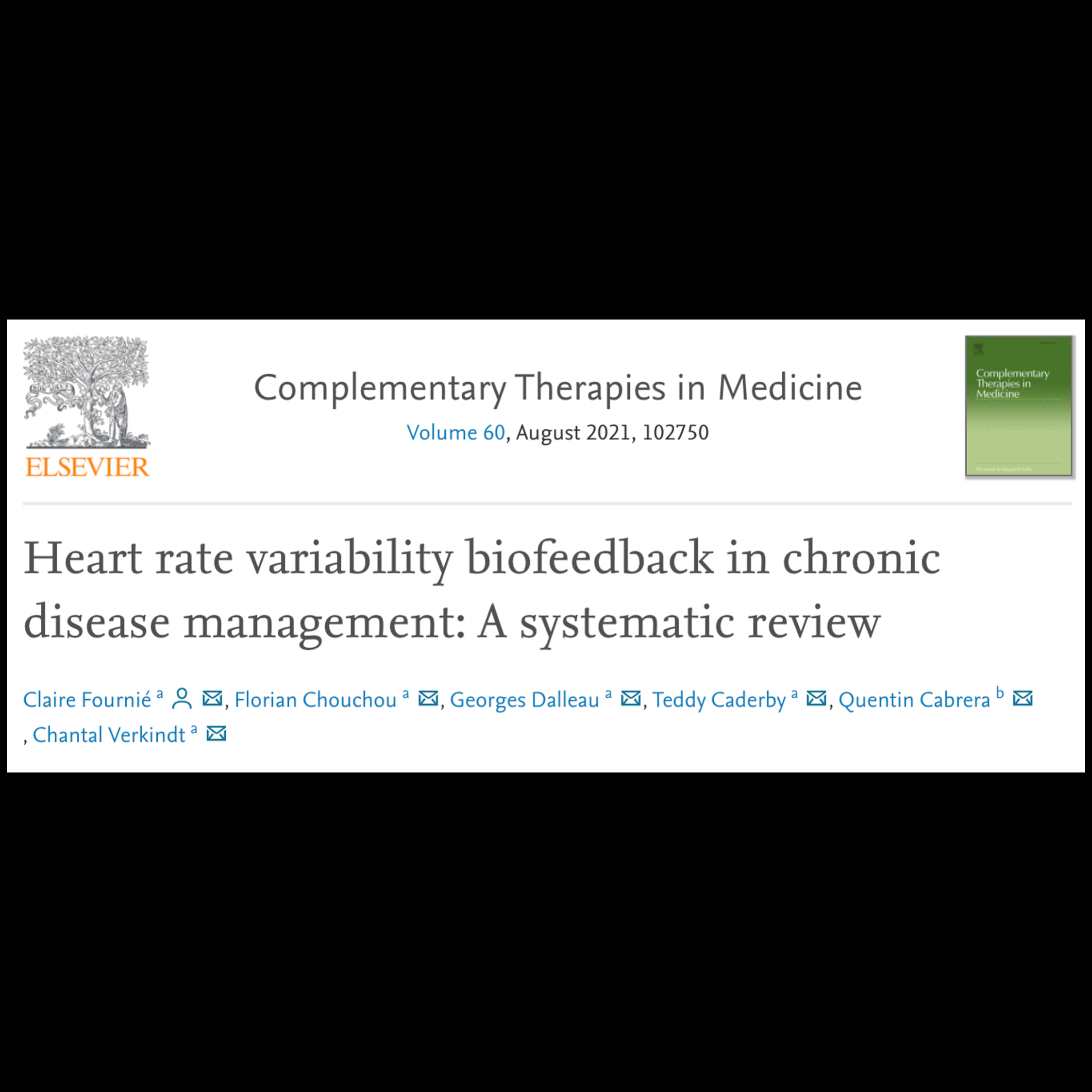Citation
Fournié C, Chouchou F, Dalleau G, Caderby T, Cabrera Q, Verkindt C. Heart rate variability biofeedback in chronic disease management: A systematic review. Complement Ther Med. 2021 Aug;60:102750. doi: 10.1016/j.ctim.2021.102750. Epub 2021 Jun 10. PMID: 34118390.
4 FUNDAMENTALS
1. Essential Background Material
This systematic review aimed to examine if heart rate variability biofeedback (HRVB) could be an effective supplemental treatment for people with chronic diseases.
Chronic diseases like diabetes, cancer, and mental health conditions are proliferating. Aside from the diseases themselves, these conditions also cause hormone imbalances, sleep problems, inflammation, stress, anxiety, etc. This leads to a significant reduction in the quality of life for those afflicted and adverse societal and economic outcomes.
One supplemental therapy that may be helpful is HRVB. Increases in HRV are thought to be mediated by increases in vagal tone and therefore indicate better overall cardio-autonomic health. This suggests that HRVB could benefit several body, brain, and emotional outcomes associated with chronic diseases.
However, although several systematic reviews exist for HRVB for specific conditions (e.g., depression or stress and anxiety), one does not exist for chronic disease management in general, which was the motivation for this current review.
2. What Did this Research Do?
The authors searched several databases for articles published up until March 31, 2020. They included studies that used HRVB in patients with various chronic diseases that had a control group to compare against. Moreover, studies that used HRVB plus another supplementary therapy (e.g., exercise) were also included (which you’ll see below was very helpful for putting the results into perspective) as long as there was a control group to get specific effects of HRVB.
They ended up including 29 studies with 1127 total patients. Each study had a sample size of 10 to 210 participants with various chronic diseases measuring diverse outcomes.
3. What Were the Major Findings?
HRVB (via slow breathing) meaningfully improved several chronic disease outcomes, and the protocol was easy to follow. Over 70% of the patients completed their daily practice, and there were very few side effects.
Here is the list of the issues they found help with:
Stress reduction and positive emotions
Asthma symptoms
Inflammation
Blood pressure
Depression and anxiety
Post-traumatic stress disorder
Cognitive function
Sleep
Overall quality of life (most important, in my opinion)
Note that these weren’t improvements across the board. Some studies showed positive results, and others were less conclusive. However, based on the available research, they concluded that the overall evidence suggests that the above outcomes are improved from HRVB in people with chronic diseases.
A critical finding was that HRVB improved all these conditions compared to controls, but it did not improve things more than other non-pharmacological interventions such as physical exercise and progressive muscle relaxation. This is so vital. HRVB works, but so do other things like exercise and mindfulness meditation. Choose which one is right for you : )
Lastly, there were some super practical findings on minimum effective dose and how to breathe during HRVB, which I’ve saved for the “1 Practical Application” section below.
4. Why Do These Results Matter?
These results are meaningful because they show that HRVB via slow breathing provides a practical approach to managing a wide array of chronic diseases. Moreover, they provide evidence that HRVB could be a powerful supplementary therapy when combined with standard care (this is always the best approach, in my opinion—it’s not going to cure anything, but it can be a powerful addition to everything else you do to manage your chronic condition).
1 BIG TAKEAWAY
HRVB (and, hence, slow breathing) is a powerful adjunctive therapy for managing a wide variety of chronic diseases. To be effective, it should be practiced for a minimum of 10 min/day (but probably 20+ for best results—see next section). More broadly, this study supports using slow breathing at around 5-6 breaths per minute in people with chronic diseases.
1 PRACTICAL APPLICATION
Wonderfully, this paper summarized all of the research and outlined the best practices for applying their findings. So, my 1 Practical Application will come directly from their advice (which you can find in Sections 4.4 and 4.5 of the paper).
Here’s what gave the best results based on the 29 studies included in this review:
Best Results: 4-12 supervised sessions plus daily home practice for ~20 min/day
Minimum Effective Dose: One supervised practice followed by home practice for 10 min/day for 4 weeks
During supervised practice, trainees should learn to breathe slowly without stress & w/o overbreathing
Use abdominal breathing w/ nasal in & pursed-lips out
The breathing ratio should have a slightly longer exhale (I like the 40/60 approach: 40% inhaling, 60% exhaling)
That’s about as good as it gets from a scientific paper! Follow those guidelines for yourself or give them to your clients and loved ones.

